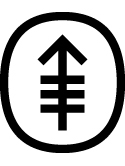| Abstract: |
Quantitations of residual T cells by limiting dilution analysis (LDA), immunofluorescence analysis, sheep red cell rosetting, and proliferative responses to phytohemagglutinin were done to identify treatment conditions that maximized the ex vivo T cell depletion (TCD) of human bone marrow (BM) with the rat monoclonal antibody Campath-1 (CP1) and complement (C'). Different treatment approaches achieved levels of TCD varying from 0.4 to 2.6 log10. However, under optimal treatment conditions, a mean (±SEM) log10 TCD of 2.60 ± 0.12 was demonstrated by LDA. Concentrations of CP1 ranging from 5 μg to 300 μg/107 cells/ml achieved equally effective TCD as determined by LDA. An inverse relationship between the concentration of BM cells/ml and the extent of TCD was observed. Additional C' treatment did not increase TCD as detectable by LDA. mean recoveries of CFU-GM (day 7), CFU-GM (day 14), CFU-GEMM, and BFU-E growth following CP1 + C' were 51, 43, 42, and 45% respectively. These results demonstrate the importance of cell concentration and treatment conditions for maximizing the depletion of BM T cells with CP1 + C'. |
| Keywords: |
t lymphocyte; t-lymphocytes; animal; bone marrow cells; cells, cultured; bone marrow; immunofluorescence; monoclonal antibody; lymphocyte activation; antibodies, monoclonal; cell culture; hematopoietic stem cells; rats; rosette formation; colony-forming units assay; cytochemistry; lymphocyte depletion; colony forming unit gm; antigens, differentiation; complement; immunoglobulin m; human; support, non-u.s. gov't; support, u.s. gov't, p.h.s.
|






